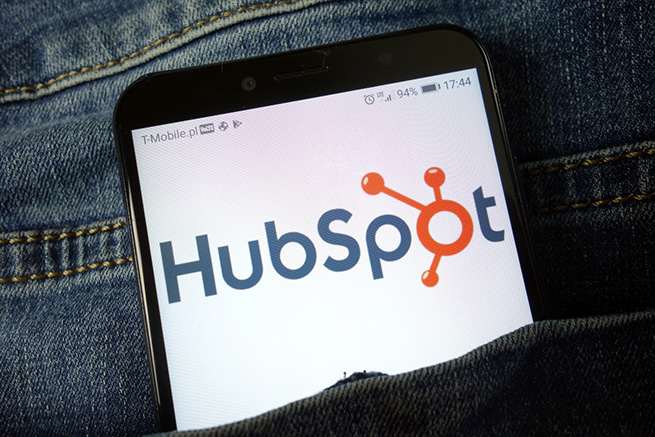B2B and Manufacturing Agenda for Inbound Conference 2023
Marketers in the B2B and manufacturing/industrial spaces could learn a lot from HubSpot’s annual marketing conference, simply called Inbound, Sept....
4 min read
 Paul Groessel
:
Jun 28, 2023 1:32:11 PM
Paul Groessel
:
Jun 28, 2023 1:32:11 PM

Successful lead management requires a clean database with actionable information that fits into your overall sales and marketing blueprint. That’s easier said than done.
If you’re getting started in HubSpot or if you feel your HubSpot account has loose ends that need cleaning up, there are three core pillars of HubSpot lead management that we recommend focusing on.
The brain, the master document, the playbook—whatever you want to call it, you need a central lead management document for your entire organization. We call it a lead management map.
This map looks like a lo-fi board game, but it’s a serious blueprint. It aligns your entire team on your company’s buyer’s journey: from where they first enter your database to a converted customer.
You can start creating one of these maps with an “if/then” exercise that covers three main questions:
Not all game pieces start on the same spot. Some don’t even start at the beginning—they jump ahead a few spaces, making them more valuable.
That’s why you must first get a handle on where contacts come into your database and where that entry point falls in the buyer’s journey. A general contact form could make someone a lead, but a “Request a Quote” form could make someone an immediate sales qualified lead (SQL). Someone you met at a conference could be further along than someone who responded to a LinkedIn message— both could be a marketing qualified lead (MQL) but warrant unique responses.
Resource: Ways to Attract Organic Leads
By identifying every way that someone could become a contact in your database, and then simply asking, “Then what happens?” you will follow your current lead management trail to its dead ends. (It can really be that simple—see our sample script inset.)
Keep asking, “What happens next?” until you’ve identified every opportunity to engage and re-engage contacts at the appropriate amount.
Who handles what follow-up process based on the contact’s lead status? When is someone ready for the sales team and when is someone going to remain in marketing nurture campaigns? By defining, at minimum, your unqualified leads, leads, MQLs, and SQLs, you can determine who on your team is handling follow-up processes as a contact moves through the funnel.
By addressing these questions and scenarios, you can build out an organized lead management map. That map will have everyone on the same page. It will clarify roles and responsibilities. It will help keep you organized, diagnose problems, and measure return on investment for your various lead gen efforts.
It will also clarify how to organize or clean up your HubSpot account.
If your lead management map is a board game, then custom properties categorize each of your contacts into types of game pieces.
HubSpot properties store contact, company, and deal information. Default properties (company name, contact name, address, etc.) are built into HubSpot. Custom properties are user-created, leaving room to tailor HubSpot to your unique lead map.
Custom properties help you organize every stage of your lead map within HubSpot itself. For example, a “Sales Territory” custom property would tie a contact to the appropriate territory-based sales person as soon as they become a contact. Knowing that information as early as possible helps setup not only sales-person assignments in the SQL stage, but it could help tailor the nurturing process up until the sales team handoff.
Custom properties also help you:
With your contact and company properties established, you’ll want a contact’s movement through your lead management system to be as automated as possible. That’s where workflows come in.
On paper, the lead map is full of “if this, then that” decision points. In HubSpot, you have the same “if/then” triggers using workflows.
Workflows are where you tie all of the starting points, lead nurturing processes, and internal roles and responsibilities into one functioning system.
HubSpot workflow capabilities:
If you’re using workflows for specific purposes, have you been able to map them in a cohesive way? Are there dead ends? Are there workflows competing with each other?
That’s why trying to sort through your workflows in HubSpot before building out a lead management map can lead to a mess.
Start with a clear map from a simple “if/then” conversation. Ensure you’re capturing the contact segmentation information you need. Create workflows that reflect your lead management map.
How do you start a lead mapping conversation with your team? Start by Identifying what happens after someone first becomes a contact. Here’s how it looks in the simplest form:
Q: What’s one way someone becomes a contact?
A: They fill out a form to download a guide on our website.
Q: Great—what happens next?
A: “They get a thank you email with a download link.”
Q: Great! Then what?
A: “They get a series of three follow-up emails.”
Q: Great! Then, what?
A: “We wait a week and then subscribe them to our blog.”
Q: OK. Then what?
A: “ … Um. I think that’s it.”
That’s OK—that’s a good start. We also identified a dead end in your lead map. You now know where the opportunity lies. Let’s move on to the next way people become a contact.
Then you move on to the next lead source (start a new square on the map) and follow its trail.

Marketers in the B2B and manufacturing/industrial spaces could learn a lot from HubSpot’s annual marketing conference, simply called Inbound, Sept....

If you’re implementing one part of HubSpot, no problem. The CMS? It’s fabulous, a world class “WYSIWYG” tool that makes it simple to post a blog the...

Launching a new website requires significant amounts of research and planning, not to mention major investments of time, energy, and resources to see...